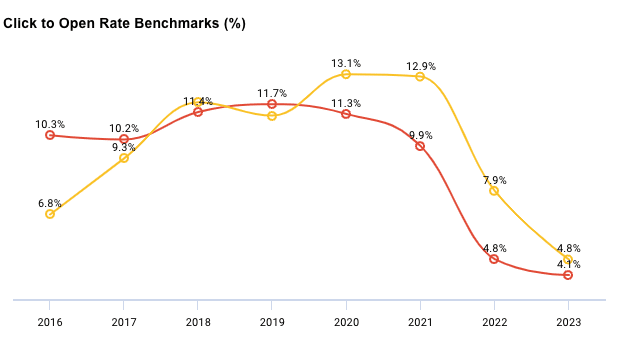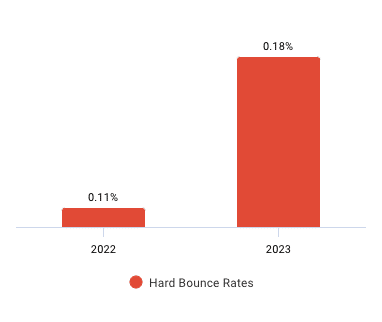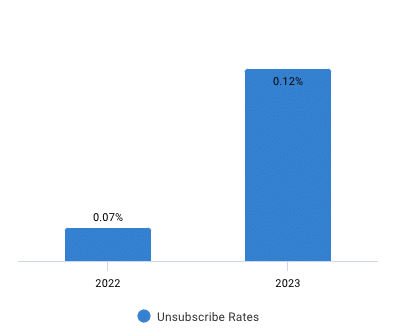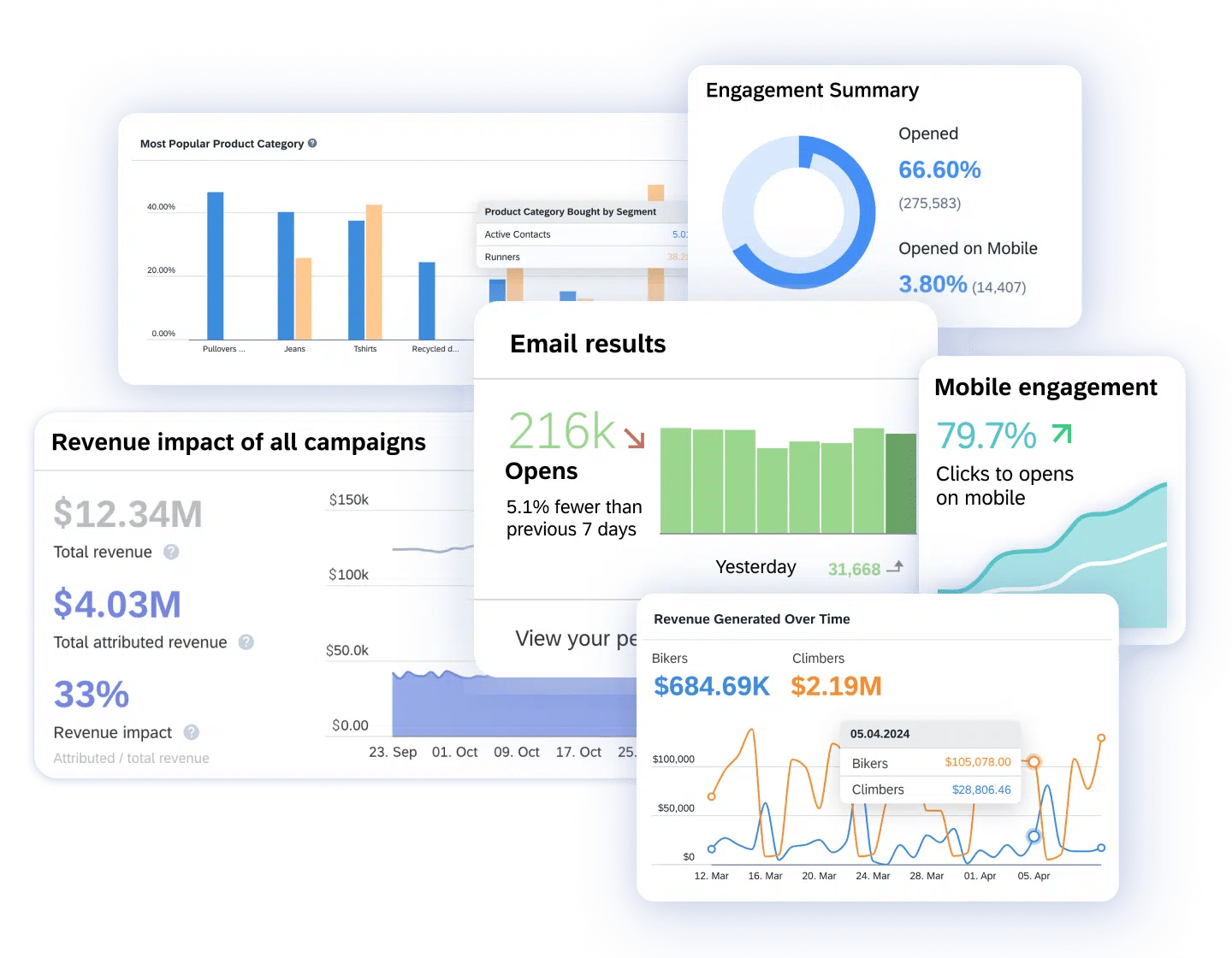Ever sent an email campaign and wondered if anyone even read it? You’re not alone. Too many marketers hit “send” and cross their fingers, hoping for the best. But hope isn’t a strategy—data is.
The difference between mediocre email marketing and high-performing campaigns comes down to tracking the right numbers. If you’re not measuring your results, you’re marketing in the dark. The best email marketers don’t guess what works—they analyze key performance indicators (KPIs) to understand what’s driving engagement, where they’re losing customers, and how to optimize every send.
Tracking email KPIs is about truly understanding your audience—what makes them click, convert, and stay engaged. Want to know if your subject lines spark curiosity? Check your open rates. Wondering if your CTAs are compelling enough? Your click-through rate (CTR) holds the answer. These insights help you refine your strategy, personalize your approach, and ultimately drive real business results.
In this guide, we’ll break down the essential email marketing KPIs you need to monitor, how to measure them effectively, and actionable strategies to improve each one. If you’re ready to get more opens, more clicks, and more conversions, let’s dive in.
Essential Email Marketing KPIs
To drive meaningful results, it’s critical to monitor specific KPIs that offer insights into your email campaigns’ effectiveness. Here are the key metrics every marketer should focus on:
1. Open rates
Definition: The percentage of recipients who open an email. This metric is calculated by dividing the number of email opens by the number of emails delivered and multiplying by 100.
Open rates indicate how compelling your subject lines, sender name, and preview text are to your audience. High open rates suggest your email content is grabbing attention, while low rates signal the need for optimization.
The impact of AI policies on open rates
However, recent industry changes have impacted how marketers track open rates. Apple’s Mail Privacy Protection (MPP) prevents senders from accurately measuring open rates by preloading email content, which skews reporting. Additionally, Google and Yahoo are implementing AI-driven policies that filter promotional emails more aggressively, influencing inbox placement and engagement rates. Marketers must now rely on a combination of metrics—such as click-through rates, conversion rates, and engagement over time—to get a clearer picture of email performance.
“Post Apple MPP changes, open rate percentages have now stabilized at 30 plus per cent, showing again this year that marketers and stakeholders should move away from this KPI to define what a successful campaign looks like.”
Tips to improve your open rates
- Personalize subject lines with the recipient’s name or relevant topics. For example, “[Name], don’t miss out on our exclusive offer!”
- Use advanced segmentation to send highly targeted emails based on user behavior or preferences, as this improves relevancy.
- Test emojis or power words in subject lines to see which garners more interest.
- Leverage platforms like SAP Emarsys to perform real-time A/B testing and iterate quickly.
- Optimize send times by analyzing historical data to determine when your audience is most likely to check their inbox.
Pro tip: SAP Emarsys Send Time Optimization analyzes email responses of every recipient in relation to campaigns launch time, and then sends the next email at the optimal time for them. The result? Effortlessly improved open rates.
2. Click-Through Rates (CTR):
Definition: The percentage of email recipients who clicked a link or CTA within the email. This metric is calculated by dividing the number of clicks by the number of emails delivered and multiplying by 100.
CTR reveals how effective your content and CTAs are at driving user engagement and guiding recipients toward desired actions.
Tips to improve your CTR:
- Use clear, compelling CTAs that stand out visually and align with the email’s content. For example, “Get Yours Now” or “Try Our Favorites.”
- Incorporate dynamic content, such as personalized product recommendations based on past purchases.
- Ensure your email design is responsive and mobile-friendly, as many users interact with emails on their phones.
- Use behavioral triggers to send emails that align with user activity, such as cart abandonment reminders.
- Test various CTA placements, sizes, and colors using SAP Emarsys’ AI-driven optimization features.
- Utilize storytelling to create a compelling narrative that naturally guides the recipient toward clicking.
- Add interactive elements such as countdown timers, surveys, or product carousels to boost engagement.

Click to open rates have slowly trended down since 2019, experiencing a sharp drop post-COVID in 2020.
3. Conversion Rates:
Definition: The percentage of recipients who complete a desired action, such as making a purchase, signing up for a webinar, or downloading a resource. This is calculated by dividing the number of conversions by the number of emails delivered and multiplying by 100.
Conversion rates measure the ultimate success of your email campaigns in achieving tangible business goals.
Tips to improve your conversion rates:
- Align landing page design and messaging with the email content to create a seamless user experience.
- Use scarcity tactics, like limited-time offers, to drive urgency and action.
- Implement retargeting strategies for users who engage with your emails but don’t convert.
- Leverage SAP Emarsys’ AI to predict and recommend content that resonates with specific audience segments.
- Optimize the conversion journey by reducing unnecessary steps and simplifying forms.
4. Bounce Rates:
Definition: The percentage of emails that fail to deliver. Hard bounces occur due to permanent issues, like invalid addresses, while soft bounces are temporary, such as full inboxes.
High bounce rates hurt your sender reputation and reduce your overall email deliverability, so if you see your bounce rate increasing, you need to look into it.
Tips to improve your bounce rate:
- Use double opt-in processes to ensure email addresses are valid and active.
- Regularly clean your email list to remove inactive or invalid addresses.
- Authenticate your email domain using SPF, DKIM, and DMARC to build trust with email providers.
- Monitor your sender score and make adjustments as necessary to maintain a strong reputation.
- Use SAP Emarsys tools to identify and suppress problematic email addresses before sending campaigns.

5. Unsubscribe Rates:
Definition:The percentage of recipients who opt out of future emails. This is calculated by dividing the number of unsubscribes by the number of emails delivered and multiplying by 100.
While some churn is natural, a high unsubscribe rate signals potential issues with email relevance or send frequency.
Changes to unsubscribe laws
Recent regulations require that marketing emails include a one-click unsubscribe option, which inbox providers like Gmail and Yahoo now prominently display if they detect disengagement. The SAP Emarsys platform automatically implements this feature for promotional emails, ensuring compliance with industry standards and helping to maintain a positive sender reputation.
Tips to improve your unsubscribe rate:
- Provide recipients with options to manage their preferences, such as adjusting email frequency or choosing specific topics of interest.
- Use re-engagement campaigns to win back inactive subscribers before they opt out.
- Regularly review content performance to ensure your emails deliver consistent value.
- Avoid overwhelming your audience with too many emails; instead, focus on quality over quantity.

6. ROI (Return on Investment):
Definition: The revenue generated from email campaigns relative to their cost. ROI is calculated as [(Revenue – Cost) / Cost] × 100.
ROI provides a clear measure of the financial success of your email marketing efforts and helps justify budget allocation.
While maximizing ROI often involves reducing costs and optimizing efficiencies, it’s also important to focus on engagement. Lowering the frequency of emails to inactive contacts—rather than eliminating them altogether—can be a cost-effective strategy for re-engagement. Since email remains one of the most affordable marketing channels, periodic sends to previously engaged contacts can help reignite interest without significant expense.
Tips to improve your email ROI:
- Use advanced segmentation and automation to maximize the efficiency of your campaigns.
- Continuously test and refine campaigns to improve engagement and conversions.
- Focus on high-performing segments or campaigns and replicate their strategies.
- Integrate SAP Emarsys’ predictive analytics to identify opportunities for higher ROI.
- Optimize email budgets by reducing manual processes and leveraging AI-driven insights.
How to Track Email Marketing KPIs
performance metrics accurately, you gain insights into what drives engagement, conversions, and revenue. Let’s take a look at some of the methods employed by top email marketers:
Use the right platform
Measuring and tracking email KPIs effectively starts with using the right tools. Platforms like SAP Emarsys provide advanced capabilities that make it easy to monitor metrics, customize dashboards, and generate reports. These tools ensure you’re equipped with actionable insights, helping you align your email campaigns with business objectives.

Set up custom dashboards
Start by setting up custom dashboards tailored to your needs. Focus on visualizing metrics such as open rates, click-through rates, and ROI. By segmenting data, you can analyze performance across specific audience groups, such as those segmented by demographics or behavior. This approach helps you pinpoint trends and uncover patterns over time.
Automate reports
Automating reports is another critical step in the process. With SAP Emarsys, you can schedule regular performance updates, ensuring your team remains informed without the hassle of manual tracking. These reports can be shared with stakeholders to maintain alignment on goals and progress.

Benchmark against industry standards
Benchmarking your performance against industry standards is also crucial. For example, comparing your open rates or CTR to averages in your sector can help you set realistic goals and identify areas for improvement. Benchmarks provide context and motivation for refining your strategies.
Analyze campaign performance
To dive deeper, analyze specific campaigns to uncover what drives success. This includes examining subject line performance, call-to-action effectiveness, and device-specific engagement. Understanding these details allows you to optimize future emails for better results.
Experiment and iterate
Lastly, experiment and iterate continuously. A/B testing variables like subject lines, visuals, and send times provides valuable insights into what resonates with your audience. Tools like SAP Emarsys enable real-time testing and implementation, making it easy to adapt and improve your email marketing campaigns as you learn more about your audience.







